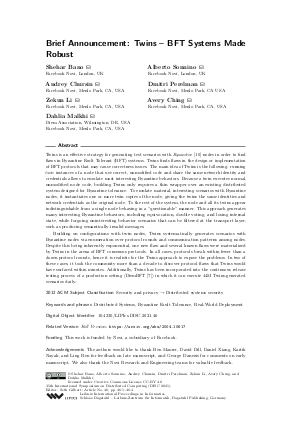LIPIcs.DISC.2021.46.pdf
- Filesize: 421 kB
- 4 pages

 Creative Commons Attribution 4.0 International license
Creative Commons Attribution 4.0 International license







Feedback for Dagstuhl Publishing